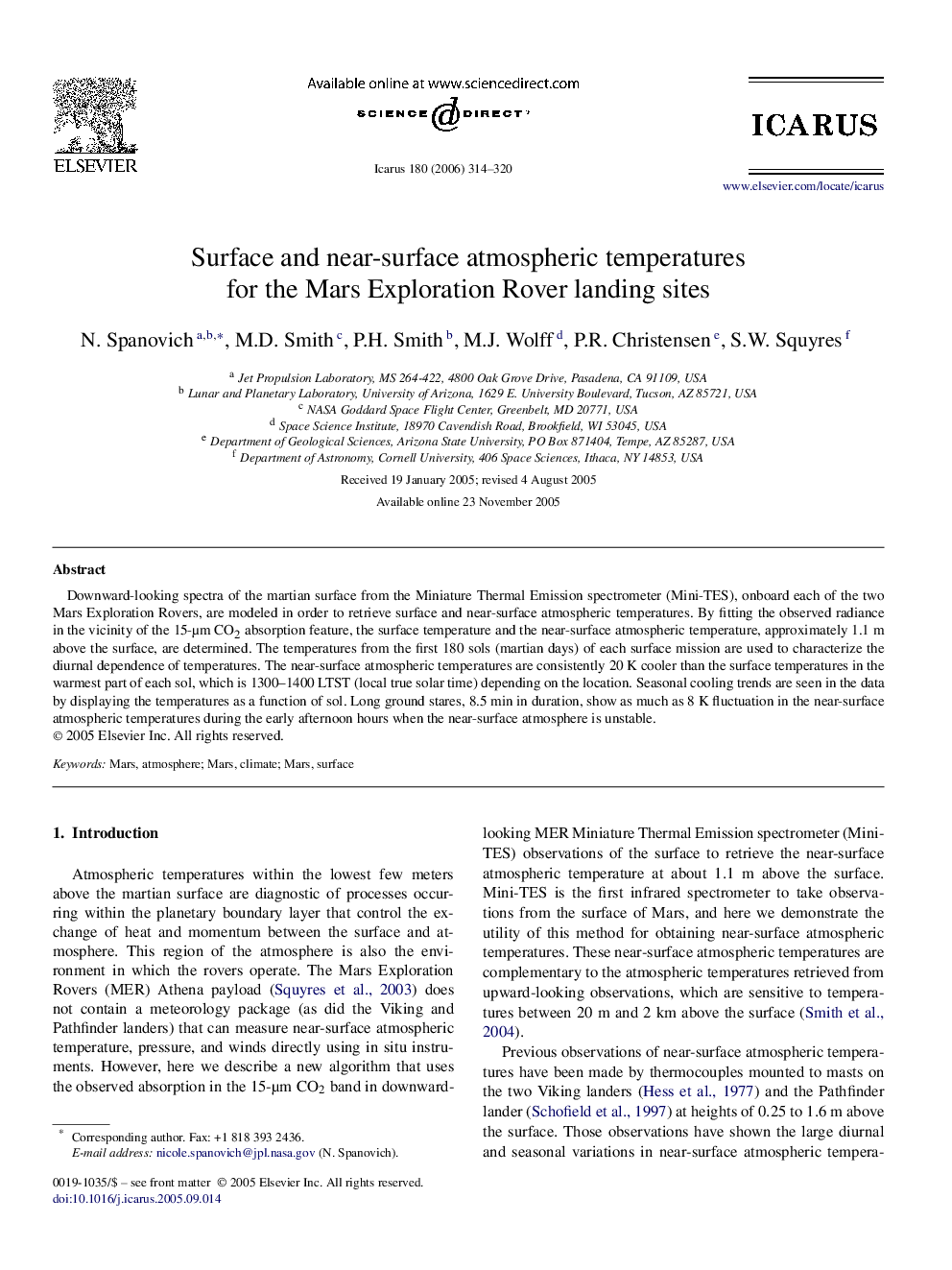| Article ID | Journal | Published Year | Pages | File Type |
|---|---|---|---|---|
| 1775940 | Icarus | 2006 | 7 Pages |
Downward-looking spectra of the martian surface from the Miniature Thermal Emission spectrometer (Mini-TES), onboard each of the two Mars Exploration Rovers, are modeled in order to retrieve surface and near-surface atmospheric temperatures. By fitting the observed radiance in the vicinity of the 15-μm CO2 absorption feature, the surface temperature and the near-surface atmospheric temperature, approximately 1.1 m above the surface, are determined. The temperatures from the first 180 sols (martian days) of each surface mission are used to characterize the diurnal dependence of temperatures. The near-surface atmospheric temperatures are consistently 20 K cooler than the surface temperatures in the warmest part of each sol, which is 1300–1400 LTST (local true solar time) depending on the location. Seasonal cooling trends are seen in the data by displaying the temperatures as a function of sol. Long ground stares, 8.5 min in duration, show as much as 8 K fluctuation in the near-surface atmospheric temperatures during the early afternoon hours when the near-surface atmosphere is unstable.
